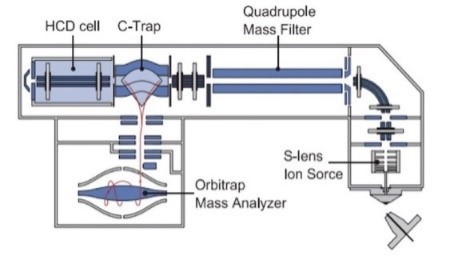|
Introduction
To begin, hereditary metabolism related illnesses are divided into three groups: intoxication, energy deficit and complex molecules. The article will focus on intoxication. Intoxication disease results in the accumulation of toxic compounds upstream of the enzymatic block. It contains organic aciduria, deficits of the urea cycle but also sugar intolerances. These diseases occur after a free interval after birth and can be observed through clinical signs of acute intoxication (vomiting, lethargy, coma, multi-organ failure…) or chronic signs (anorexia, growth retardation, psychomotor retardation, cardiomyopathy…). Their diagnosis is based on blood and urinary amino acids and urinary organic acids chromatography coupled to a mass spectrometer.
Experimental conditions
On the one hand, amino acid samples were prepared with an internal standard solution, then proteins were precipitated to separate them to amino acids. Then a solution was used to derivatize. The isotopic ratio between the endogenous molecules of interest and its deuterated internal standard was obtained by quantifying the area under the curve of the respective peaks in UPLC-HRMS. And from a calibration solution, a calibration curve crossing the concentration and the isotopic ratio of a patient’s serum was gathered; the concentration (µmol/L) in amino acid was deduced. The liquid chromatography was combined with a mass spectrometer Q-exactive. It was composed of an electrospray ionization source, a quadrupole, a C-Trap and an Orbitrap (Figure 1).
On the other hand, urinary organic acids were treated. They were diluted in physiological serum according to their creatinine concentrations. Then they were extracted. An internal standard solution was added to allow the quantification of compounds. Next thanks to an excess of NaCl and an acidification, the supernatant was recovered of the organic phase containing the organic acids. Samples evaporated and, once dry, taken up with acetonitrile and BSTFA, which is a silylation derivatization reagent (Figure 2). Urinary organic acids were analyzed in gas chromatography combined with a mass spectrometer when an electronic ionization source was used. The concentration (mmol/mol of creatinine) was deduced thanks to an internal standard solution.
Results
To have reliable results, internal and external quality controls are added to the sample series. These quality controls are used to allow each laboratory to compare their results with the other laboratories, to prevent analytical dysfunction, to prove the control of the analytical system and provide uncertainty measurement.
Thanks to the different analyses a database is created and supplemented when results are organized in group of age. For example, a patient has a concentration of methyl malonate 2000 times higher than the normal concentration. Thus, we can raise a methylmalonic aciduria thanks to the comparison with the database.
Conclusion
Currently these analyses are not practiced in routine. The goal is to create a complete database to facilitate the diagnosis. This database is a time saver and ensures a good traceability for results and for quality controls.
|
|

Figure 1: Q-exactive

Figure 2: Reaction of silylation
|




